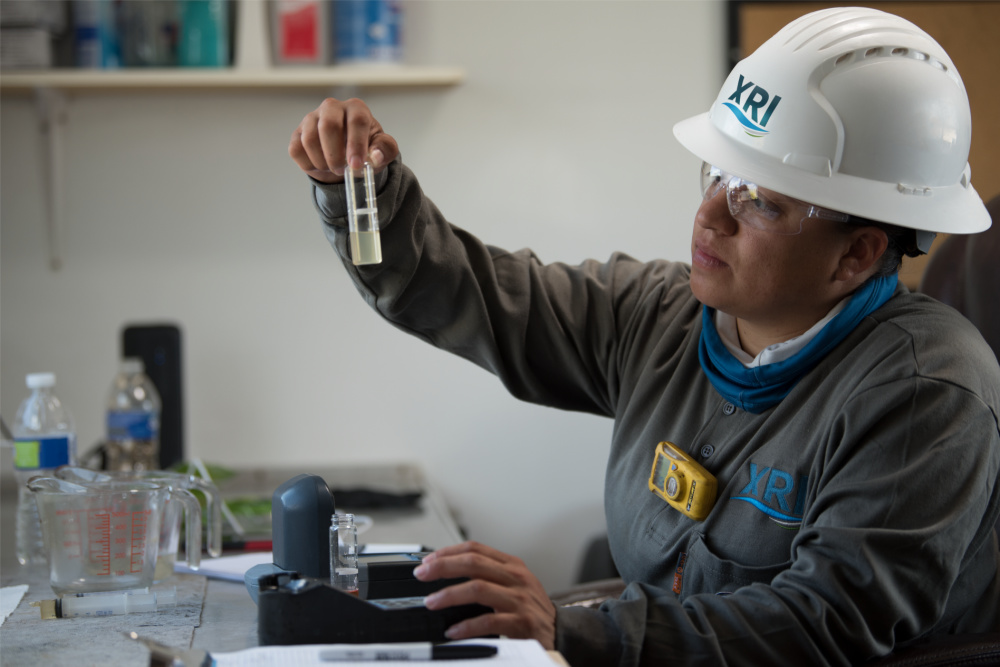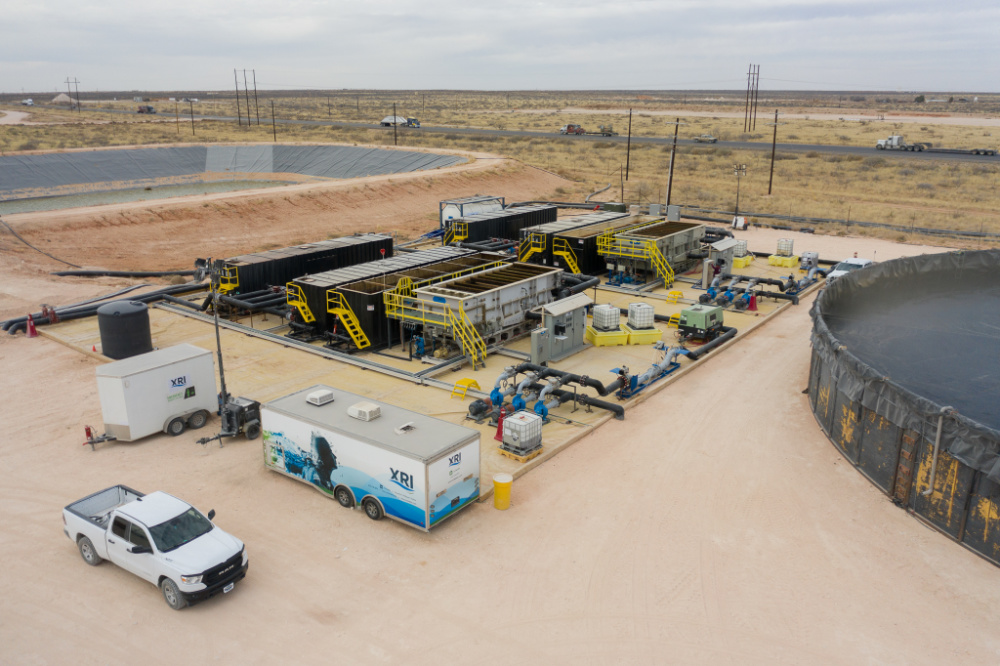The shale industry’s approach to water management is evolving against the backdrop of increased water usage by operators and the recent focus on ESG performance.
One significant trend is the rise of produced water recycling, as operators minimize water disposal and step up reuse. The buildout of water infrastructure has taken place and attitudes toward sharing of recycled water in the Permian Basin have shifted. Some water companies are also exploring the possibility of treated and recycled water from shale operations being used by other industries too.
There is still scope for the industry to further improve its water management performance, but significant strides forward have been made, especially in recent years.
On the up
“Water is essential, and the ability to have proven takeaway and reliable access to water when you’re fracking becomes critically important, so everybody is focused on more effective water management,” Aris Water Solutions’ president and CEO, Amanda Brock, told Hart Energy.
Water requirements for shale producers have evolved alongside drilling practices. As the industry has sought to become more efficient, especially during the downturns of recent years, it increasingly pursued wells with longer laterals, as well as multiwell pad drilling, simultaneous fracking and other ways of maximizing output. All of this has driven up water demand.
“Our customers—being majors, large independents and privates—are all wanting as much access to recycled water for use in their operations as they can get.”—Amanda Brock, Aris Water Solutions
According to water management company XRI’s CEO, Matt Gabriel, less than a decade ago, well completions required on average one-fifth the amount of water that they do today.
“Almost exclusively back then, it was a freshwater solution that was provided,” Gabriel told Hart Energy. XRI, which focuses on the recycling of produced water, saw this as unsustainable. The company treats disposal of such water as a last resort.
“About 80% of the produced water we touch every day is recycled and reused,” Gabriel said. “Our current average high-water mark is about a million barrels a day of recycled volumes that’s going back into the system for reuse by customers.”
Like XRI, Aris has also seen demand for recycled water rise.
“Being concerned about environmental impacts and their water footprint, you are seeing rapid adoption of the use of recycled produced water,” Brock said.

Aris recycles around 400,000 bbl/d of water across eight locations in the Permian Basin and continues to expand its footprint.
“Our customers—being majors, large independents and privates—are all wanting as much access to recycled water for use in their operations as they can get,” said Brock.
“About 80% of the produced water we touch every day is recycled and reused.”—Matt Gabriel, XRI
Chevron Corp. recently provided an update on the agreement it had struck with Aris in May. The deal, Chevron noted, puts the company on a path to using 80% recycled produced wastewater for its fracking operations across most areas by the end of 2023. A Chevron spokesperson told Hart Energy that the company used no fresh water for fracking in 2021, and 99% of its Permian water needs that year were satisfied by brackish or recycled sources. The company’s next goal is to phase out brackish water, which accounted for 55% of its Permian water use last year, replacing it with treated produced water, even as it ramps up production in the basin and its water needs increase.
Sharing water
Notably, Chevron has said that the produced water not required for its own fracking operations can be transported to be used by other operators where possible. This illustrates an emerging willingness for Permian operators to share water resources that had not been there previously.
“There was a chain-of-custody concern that existed a few years ago that intellectually producers have overcome,” said Gabriel. “We went from, two years ago, a prohibition on using one super major’s produced water for another, to now an actual encouragement, to incentives. If we give them enough notice, they’ll be sure there’s more water available.”
This continued sharing of water and water infrastructure is one area where Gabriel sees potential for improved performance when it comes to water management. Permian producers are now beginning to follow in the footsteps of Appalachian operators, who have a more established history of water sharing, according to Olympus Energy LLC’s chief operating officer, Mike Wahl.
“That’s been part of the legacy in the history up here in Appalachia, so it’s a little bit different than the Permian,” Wahl told Hart Energy. “We’ve got active partnerships and relationships with most, if not all, of our major neighboring operators to do exactly that, to maximize the recycling and reuse across the system. It’s been a priority for a number of years up here, and it’s one that the operators in this region take very seriously,” he said.
Olympus has gone over three years without trucking fresh water to its completions, Wahl noted. The company recently received a certification from Project Canary that includes the highest available rating for its water recycling program.

Exploring options
A number of new ways for managing water are now being explored across the industry. Both Olympus on the operator side and Aris on the service provider side are involved in the U.S. Department of Energy’s Produced Water Application for Beneficial Reuse, Environmental Impact and Treatment Optimization (PARETO) initiative. Aris said it serves as a real-world case study for PARETO, while Olympus is collaborating on the development and testing of produced water optimization software through the initiative.
“We’ve got active partnerships and relationships with most, if not all, of our major neighboring operators … to maximise the recycling and reuse across the system.”—Mike Wahl, Olympus Energy LLC
Aris is also involved in a study with Texas A&M University aimed at the utilization of treated produced water for nonconsumptive crop irrigation. This is part of Aris’ approach of treating produced water as waste-to-asset that can be repurposed to benefit other industries and stakeholders beyond oil and gas.
XRI is also exploring produced water’s potential to be beneficial beyond the oil and gas industry.
“Environmental discharge is something we’re excited about, with large-volume networks treating water to match the region’s groundwater quality and then extensively building intentional marshlands with grass, and reeds and things that would actually be a carbon consumer,” said Gabriel. This would require an environmental discharge permit and managing the water quality to be as clean as the local groundwater, which Gabriel said would not be cheap.
“But with scale, we’re able to get it to ostensibly match produced water disposal costs, close enough that we think this could be a major disrupter to traditional downhole disposal,” he said.
Recommended Reading
Cheniere Energy Declares Quarterly Cash Dividend, Distribution
2024-01-26 - Cheniere’s quarterly cash dividend is payable on Feb. 23 to shareholders of record by Feb. 6.
Marathon Petroleum Sets 2024 Capex at $1.25 Billion
2024-01-30 - Marathon Petroleum Corp. eyes standalone capex at $1.25 billion in 2024, down 10% compared to $1.4 billion in 2023 as it focuses on cost reduction and margin enhancement projects.
Humble Midstream II, Quantum Capital Form Partnership for Infrastructure Projects
2024-01-30 - Humble Midstream II Partners and Quantum Capital Group’s partnership will promote a focus on energy transition infrastructure.
BP’s Kate Thomson Promoted to CFO, Joins Board
2024-02-05 - Before becoming BP’s interim CFO in September 2023, Kate Thomson served as senior vice president of finance for production and operations.
Magnolia Oil & Gas Hikes Quarterly Cash Dividend by 13%
2024-02-05 - Magnolia’s dividend will rise 13% to $0.13 per share, the company said.








